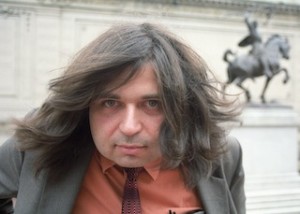Since 1989, British composer Richard Ayres (born 1965) has lived and worked in the Netherlands. He currently teaches composition at the Royal Conservatoire in Den Haag: an institution where he did his graduate studies with Louis Andriessen. His compositional style reveals a profusion of influences, from Ives and Kagel to Ades and Janacek. Above all one notices his interest in dense counterpoint, frequently deployed in multi-layered structures; as well as a concomitant flair for testing the limits of playability, often with an eye towards cultivating a “melancholically humorous” ambience.
One of his favorite mediums is the “noncerto:” a composition for soloist and orchestra in which the soloist isn’t a heroic individual who overawes both orchestra and audience. Instead, the soloist’s role is quite the opposite: a Beckettian antihero: frequently asked to explore the barely possible or, indeed, the impossible. There are antecedents for the noncerto – notably in works by Carter, Feldman, and Kagel. By turning the concerto paradigm on its head, Ayres creates an affecting exploration of the individual who feels inarticulate: out of step with society. Doing so while creating compelling music (that attracts non-soloists) is no mean feat! But Ayres’ noncertos are becoming increasingly in demand.
 This year he’s received a great deal of buzz in Europe. His new CD for the NMC imprint, Noncertos and Others, has received accolades from many corners, including critical praise from venues not ordinarily known to be sanguine about contemporary classical music. Perhaps the disc’s biggest coup to date is landing the coveted “Editor’s Choice” distinction from Gramophone magazine.
This year he’s received a great deal of buzz in Europe. His new CD for the NMC imprint, Noncertos and Others, has received accolades from many corners, including critical praise from venues not ordinarily known to be sanguine about contemporary classical music. Perhaps the disc’s biggest coup to date is landing the coveted “Editor’s Choice” distinction from Gramophone magazine.
Despite the plaudits overseas, Ayres isn’t a household name yet here in the United States. Indeed, during the course of our wide-ranging discussion, he mentioned having not yet been programmed by an orchestra the United States. One hopes that this oversight is quickly remedied!
Christian Carey: How did you come up with the idea of the ‘noncerto?‘ Who first performed one of your noncertos? Have soloists been receptive to the idea of this type of piece?
Richard Ayres: I saw a program on the TV that was about a trombonist with some sort of Alzheimer’s disease. He was holding an electric razor and thought it was a trombone. He became very upset when he couldn’t work out how to play it. This broke my heart, and I wanted to write a little piece out of sympathy or as a tribute to this guy. This piece became the first noncerto for small ensemble and alto trombone. The Schoenberg Ensemble from Amsterdam commissioned it. I became attracted by the idea of outcast against the crowd, and four more noncerti followed.
Soloists need a melancholic sense of humor (humor not comedy), and an amazing technique to play these pieces. In spite of being underdogs, the solo parts are obviously virtuosic. I like to think that anyone that is attracted to the melancholia of Charlie Chaplin, or the excess of Terry Gilliam would like to play my noncerti. This is certainly just vanity.
CC: Each time I listen to No. 37B for Orchestra, I’m struck by what I hear as a kinship with the music of American composer Charles Ives: the overlapping of orchestral lines in a sort of collage, the frequent shifts of focus, and the wondrously pungent dissonances. Of course, I might just be listening through my own set of repertoire filters, but I wondered- is Ives at all influential on the music you’re composing?
RA: Oh yes! I heard Ives’ 4th symphony when I was a student and this gave me permission to write “far too many notes” sections in my pieces, and generally to roam around musical history. Actually these seemingly complex textures are rarely more than five musical lines…any more than 4 musical lines seems to be heard as a texture. I’m glad I listened in that particular counterpoint class!
CC: Who are some other touchstone composers you might point to?
RA: Oh, far too many to mention. I devour all music. Contemporary music loves range from Jerry Hunt right through to Tom Ades. I listen to loads of folk and rock music, just about anything. If I had to pick out some especially important classical composers then, apart from Ives, the music of Janacek, Sibelius, Beethoven, Mozart, Purcell, Rameau, Verdi, Strauss has been a massive influence on my composition.
I am just as, if not more, influenced by film. Fellini, Guy Madden, Terry Gilliam, and the great Charlie Chaplin have all played a part in shaping my creative taste.
CC: Would you tell us a bit about your numbering system for pieces?
RA: Three reasons for the numbers: I don’t have a lot of imagination for titles, and the ones I have made up were pretty awful; I find it easier to remember which piece is which (although this is no longer true. As I get older and the number of pieces increases, I find I can’t remember which is which); I forget now which painter said “a title is as important as a color in a painting”. Was this Jasper Johns? Whoever it was, I agree entirely. A title determines, or colors the listeners perception of a piece of music. I don’t want to pollute a listener’s experience unless it is absolutely necessary. At the moment I am playing with a juxtaposing literary and musical narrative, and am writing extremely long movement titles that are very evocative, and either concur with, or contradict how we experience the music’s emotional world.
CC: Noncertos and Others (NMC) has gotten a terrific reception, both in Europe and the US. Has this been a surprise, albeit a pleasant one?
RA: I wish I could be cool and knowing and say that it was what I had expected. I can’t, and I am extremely surprised. When I opened my copy of Gramophone magazine and saw my CD was editor’s choice I immediately ran to buy a copy to send to my mother. I’m very happy.
CC: For those whose introduction to your work comes via this CD, where would you send them next to learn more about your oeuvre?
RA: That is a bit of a problem as this is the only commercial recording, and so far my music has been played all over Europe but not in the states. I’ve never been there either, but I will get there one day!
__________________

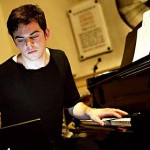

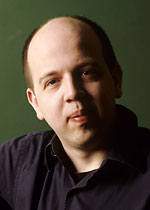
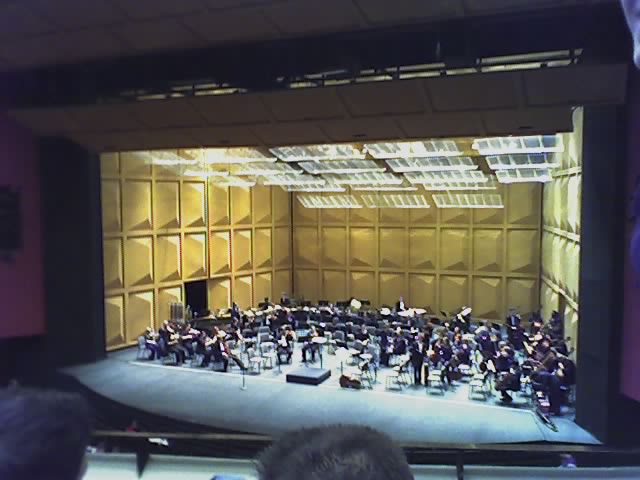
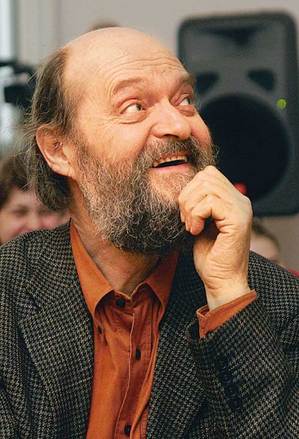
 Steve Reich’s latest
Steve Reich’s latest 
